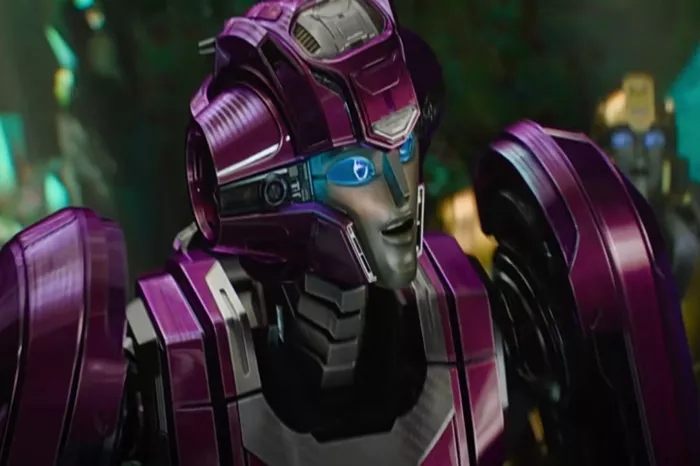The Transformers franchise, renowned for its colossal robots and explosive action sequences, has become a significant part of modern cinematic culture. Since its inception, the series has employed a blend of practical effects and computer-generated imagery (CGI) to bring the Autobots and Decepticons to life. With the upcoming release of Transformers One, there has been considerable speculation about the extent of CGI in the film. This article aims to explore the likelihood and implications of Transformers One being primarily a CGI film.
The Evolution of CGI in the Transformers Franchise
Early Use of Practical Effects
The original Transformers film, released in 2007, marked a significant milestone in the use of visual effects in cinema. Director Michael Bay combined practical effects and animatronics with CGI to create a realistic portrayal of the transforming robots. The production team employed physical models and props for close-up shots and interactions with human actors, while CGI was used to enhance the action sequences and complex transformations.
Advancements in CGI Technology
As technology advanced, so did the reliance on CGI within the franchise. Subsequent films saw a reduction in the use of practical effects, with CGI taking center stage. The robots became more detailed and expressive, allowing for greater storytelling potential and immersive action sequences. By the time Transformers: Age of Extinction was released in 2014, the franchise had fully embraced CGI, creating entire characters and environments digitally.
Balancing Realism and Spectacle
One of the key challenges faced by the filmmakers has been maintaining a balance between realism and spectacle. While CGI offers unparalleled flexibility and creative freedom, it can also lead to visual fatigue if overused. The filmmakers have strived to strike a balance by combining CGI with real-world elements, such as shooting on location and using practical effects for explosions and stunts.
See also: Will Transformers One Be in Theaters?
The Role of CGI in Transformers One
Complexity of Transformations
The very nature of the Transformers characters necessitates the use of CGI. The intricate process of transforming from vehicle to robot and vice versa is a visual spectacle that can only be achieved through digital effects. The level of detail and fluidity required to make these transformations believable is beyond the capabilities of practical effects alone.
Creating a Futuristic Setting
Transformers One is rumored to explore new settings and timelines, potentially featuring futuristic cities and alien landscapes. CGI will play a crucial role in bringing these environments to life, offering viewers a glimpse into the advanced technology and architecture of the Transformers universe.
Enhanced Character Interactions
The use of CGI allows for more dynamic interactions between the Transformers and their human counterparts. CGI enables filmmakers to create scenes where the robots can interact with the environment and the human characters in ways that would be impossible with practical effects. This enhances the storytelling and allows for more emotional connections between the characters.
The Challenges of Using CGI in Transformers One
Maintaining Realism
One of the primary challenges of using CGI extensively is maintaining a sense of realism. While CGI allows for greater creative freedom, it can also lead to a disconnect between the audience and the film if not executed properly. The filmmakers must ensure that the CGI is seamlessly integrated with the live-action elements to create a cohesive and believable world.
Avoiding Visual Fatigue
CGI-heavy films run the risk of causing visual fatigue among viewers. The constant barrage of digital effects can be overwhelming and detract from the overall viewing experience. To mitigate this, the filmmakers must carefully balance the use of CGI with practical effects and real-world elements to create a visually engaging and immersive film.
Budget and Time Constraints
Creating a CGI-heavy film is both time-consuming and expensive. The process of rendering and animating the digital effects requires a significant investment of time and resources. The filmmakers must carefully manage their budget and schedule to ensure that the film meets its production deadlines without compromising on the quality of the visual effects.
The Impact of CGI on the Future of the Transformers Franchise
Pushing the Boundaries of Visual Effects
The use of CGI in Transformers One will likely push the boundaries of visual effects, setting a new standard for the franchise. As technology continues to advance, the filmmakers will have access to new tools and techniques that will allow them to create even more realistic and immersive worlds.
Expanding the Scope of the Franchise
The ability to create complex and detailed environments and characters through CGI will enable the filmmakers to explore new storylines and settings within the Transformers universe. This could lead to the development of spin-offs and sequels that further expand the scope of the franchise.
Enhancing the Audience Experience
The use of CGI in Transformers One will enhance the overall viewing experience for the audience. The film’s visual effects will allow viewers to fully immerse themselves in the world of the Transformers, creating a more engaging and memorable cinematic experience.
Conclusion
The extensive use of CGI in Transformers One is both a necessity and an opportunity for the filmmakers. While it presents certain challenges, it also offers the potential to create a visually stunning and immersive film that pushes the boundaries of what is possible in the world of visual effects. As the Transformers franchise continues to evolve, the role of CGI will undoubtedly play a crucial part in shaping its future.
Related topic:
Where to Watch Transformers: Rise Of The Beasts
Who is the god of Transformers
How old is Bumblebee from Transformers

